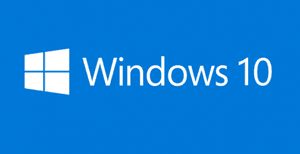 If you’re shopping for a budget PC or tablet with Windows 10 on it you’ll find plenty of them that come with just 32GB of storage space.
If you’re shopping for a budget PC or tablet with Windows 10 on it you’ll find plenty of them that come with just 32GB of storage space.
In fact, I’ve reviewed several such low-cost Windows 10 devices on this blog in the past.
And I must say that some of those reviews were glowing.
But that being said, I’ll never review or recommend another Windows 10 device of any kind that comes with just 32 GB of storage.
32 Gigs used to be enough for all versions Windows 10 to run on low-cost devices, but that’s no longer the case.
According to Microsoft’s recently-updated Windows 10 System Requirements, version 1903 and later versions will require at least 32GB of storage space in order to install, run and update a device’s Windows installation.
After reading the above you might think that 32GB of storage space would still be adequate. And if you never install any programs or plan on using the device just for the short term, you’d be right.
But unfortunately, there are problems with that scenario…
Beginning with version 1903, Windows 10 will reserve about 7GB of storage space to solely for use when installing Windows updates.
With that 7GB no longer available, you’ll only be able to actually use about 25GB of a device’s 32GB total storage space.
That means the Windows installation itself along with just one or two installed programs could completely use up every byte of the device’s available storage!
Even worse, if Microsoft ever boosts the minimum storage required to install Window 10 again (and trust me, they will at some point), your 32GB device will immediately become obsolete and virtually unusable since it will no longer meet Windows 10’s minimum storage space requirement.
Bottom line: While lower-cost Windows 10 laptops and mobile devices are perfectly adequate for many users, I can no longer in good conscience recommend the purchase of any Windows 10 device that just has 32GB of storage space.
If you’re looking for a budget Windows 10 laptop or tablet, I strongly recommend that you only consider devices that have at least 64GB of storage space.
Bonus tip #1: This post explains how to bypass the Logon screen in Windows 10 and make it boot directly to the Desktop.
Bonus tip #2: Want to make sure you never miss one of my tips? Click here to join my Rick’s Tech Tips Facebook Group.
Not into Facebook? Then click here to join my LinkedIn Tech Tips Group instead!
Want to ask Rick a tech question? Click here and send it in!
If you found this post useful, would you mind helping me out by sharing it? Just click one of the handy social media sharing buttons below.